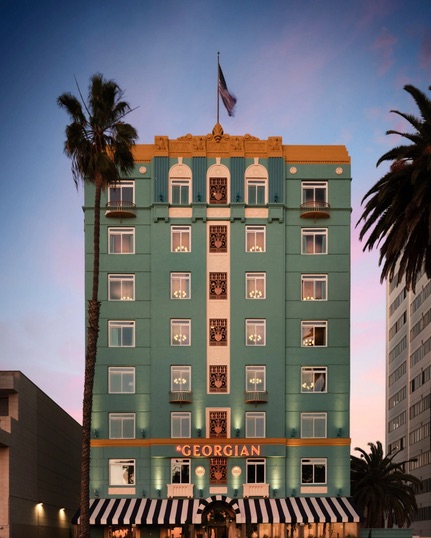The purchase of a piano is often the largest single musical investment a person or family will make in a lifetime, and choosing the right instrument from a reputable business with longevity, a track record of excellence in service after the sale, and many decades of combined expertise in their professional staff (not to mention the quality of products they offer) will make all the difference in the world.
Here is a sad, cautionary tale via businessinsider.com
“I had the surprise planned out. The moment our new au pair arrived at our house, I would pull the dust sheet off his welcome gift and say, “Ta-da!” His jaw would drop at the sight of a Steinway baby grand piano.
One of the reasons I’d hired our au pair — aside from him being an experienced babysitter — was his musical talent. He was a classically trained pianist from the Czech Republic. The video on his application showed him sweeping back the tails of his tuxedo and playing a grand piano.
I saw him teaching our kids how to play. I imagined him entertaining our friends with an impromptu performance or two.
We couldn’t afford a new piano. I appealed for a secondhand model on the neighborhood-networking site Nextdoor. A few people sent me photos of their “well-loved” — and, dare I say, ugly — pianos. They were literally on their last legs. It wouldn’t have been worth my while paying the exorbitant moving costs.
I couldn’t believe my luck when I spotted the ‘free piano’
I found a decent-looking upright Yamaha on Craigslist. But it cost $5,800 — plus an estimated $1,250 relocation fee.
So I couldn’t believe my luck when I spotted an ad on Facebook Marketplace for a gleaming baby grand piano by Steinway & Sons. Not only is Steinway the Lamborghini of pianos — John Lennon played an exquisite white Steinway in the video for “Imagine” — but the piano was free.
I messaged the seller. “Yes, it’s still available,” they said. They told me that they were acting on behalf of their sister, Joyce Ehle, a recently widowed doctor who was downsizing. I sent her an email.
She replied the next day. “I’m hoping to give it out to someone who is a passionate lover of the instrument,” Ehle wrote. “It’s currently going to be with the movers I employed to move my properties from my house which is it’s on the move,” she added. I failed to notice her poor grammar. “If you really don’t mind making new arrangements with the movers, I can attempt to get in touch with them to reroute it,” she went on. “This should not attract too many charges since the distance can be recovered within a day or two.”
I saw a photo of the dismantled piano, seemingly in transit
Things moved fast. Ehle sent a link to the freight company and her order number. She said to communicate with them via online chat. The only favor she wanted in return, she said, was a photo of her husband’s piano in its new home.
The website of the freight company looked professional enough. I typed Ehle’s order number into the chat and asked about the reroute. They sent a photo of a disassembled piano inside a shipping container. It was wrapped in packaging material, but I could see the outline of the lid of a piano. I wrote my name, address, and telephone number into the chat. The operator set the delivery for a week later.
I followed the instructions, sending the agreed $340 moving fee via PayPal. The payee was a Yahoo address. They wanted a screenshot of the transaction. I sent a thank-you email to Ehle, assuring her that the piano would be in good hands.
I couldn’t wait for my bargain Steinway to arrive. I hadn’t figured out where to put it yet. “It’s going to be tight,” I thought. “But it’ll fit somewhere.”
Two days before the expected delivery, I received an email from the freight company. They apologized for the late notice, but there was an extra charge. They said the owner had failed to complete some paperwork in time. I was liable for an “interstate fee” of $370. If I didn’t pay by Zelle, the delivery of the piano would be canceled.
I realized I’d been scammed
I thought about contacting Ehle. “Maybe it’s not too late for you to sign the paperwork,” I planned to tell her. Then I felt guilty. It would be heartless to pester a grieving widow. The total cost of the piano may have increased to $710, I thought, “But it’s still a pretty good deal.”
I went to sleep without paying the $370, thinking I’d Zelle it the following day. But I tossed and turned. Around 3 a.m., I sat bolt upright in bed. I thought about the “interstate fee” — something I’d never heard of before. I’d never spoken to anyone on the phone about the piano. The arrangements had been made either by email or chat. “It’s a dirty, rotten scam,” I thought.
I got up and Googled “grand piano scam.” There were dozens of hits with titles like “Avoid Baby Grand Giveaways” and “Don’t fall for the Grand Piano Scam.” The warnings were all over media, consumer, and police websites. I read some lengthy Reddit threads. I was the victim of a sophisticated con which, judging by the dates of the reports, had become increasingly common in recent months.
Read more at businessinsider.com



 The Georgian, in Santa Monica has reopened its speakeasy 60 years later. (Photo by Maxime Lemoine)
The Georgian, in Santa Monica has reopened its speakeasy 60 years later. (Photo by Maxime Lemoine)